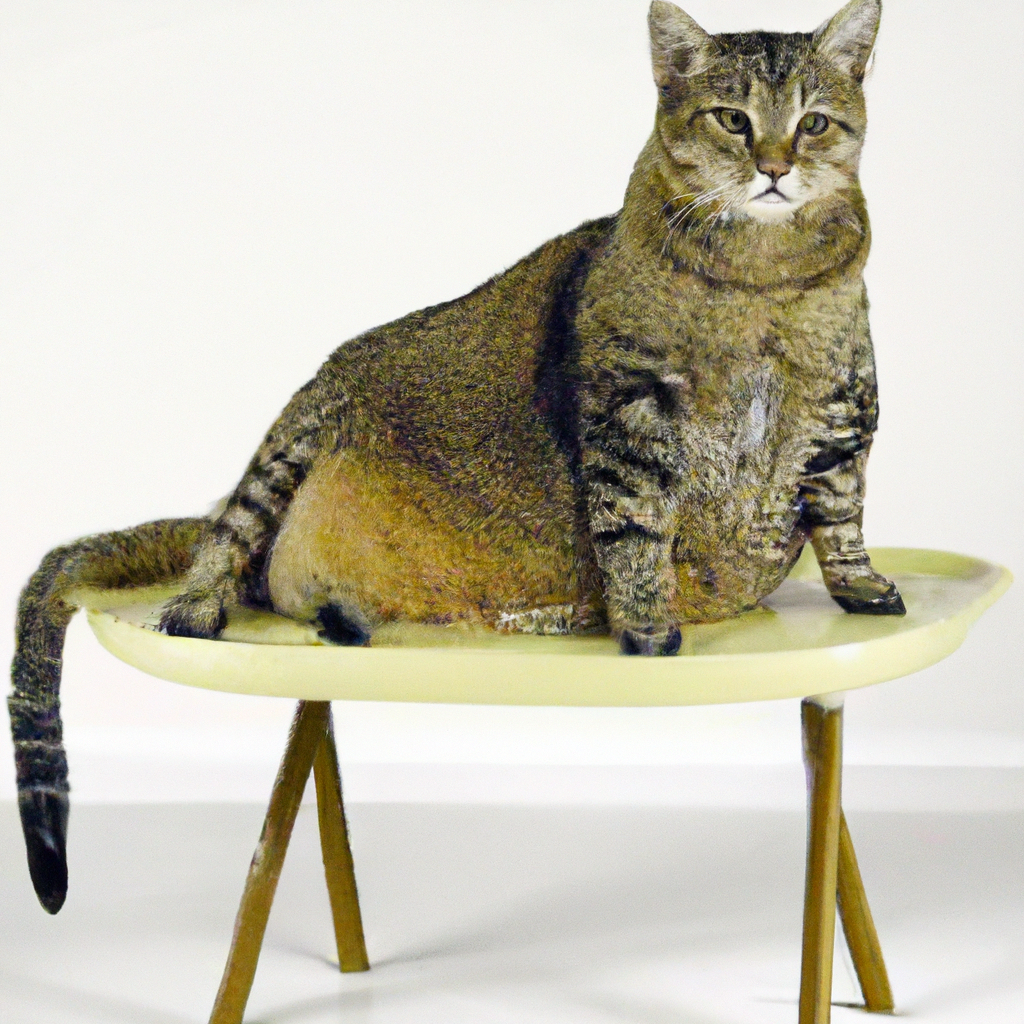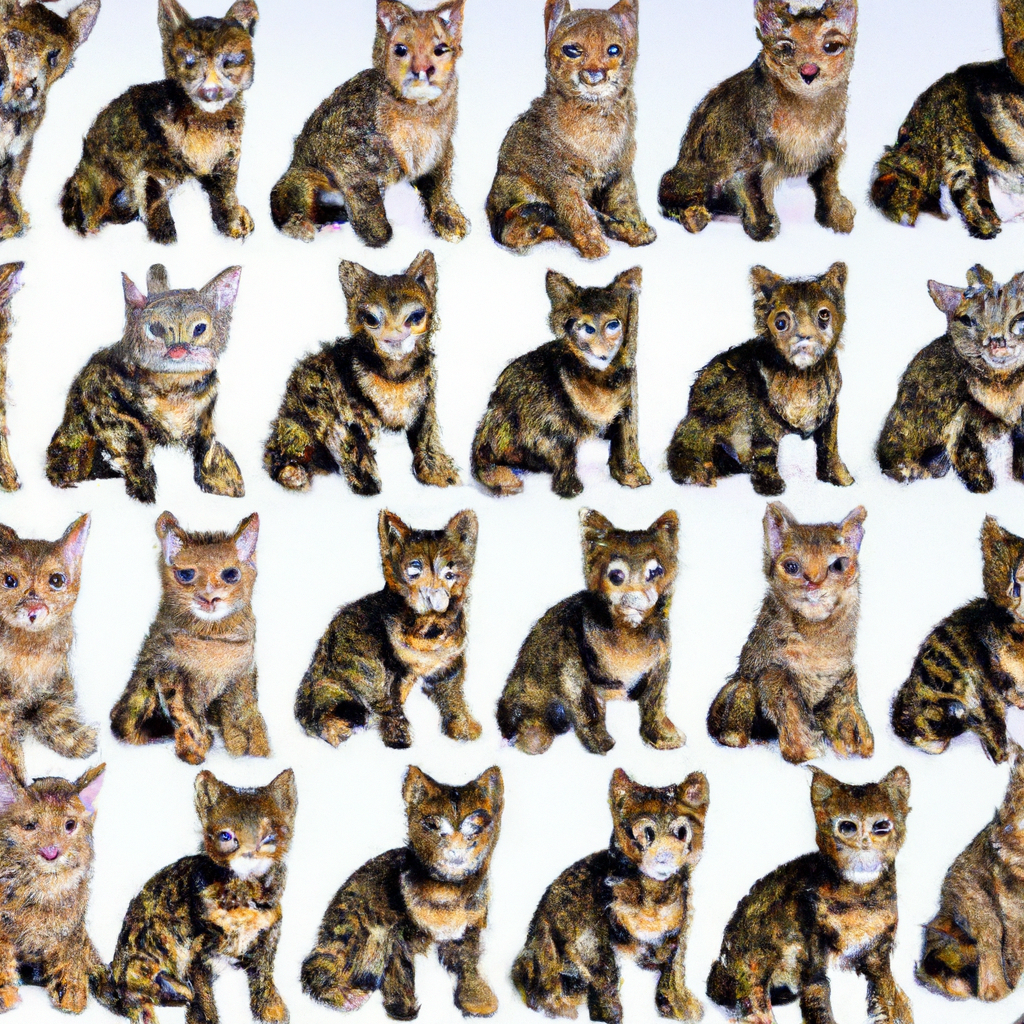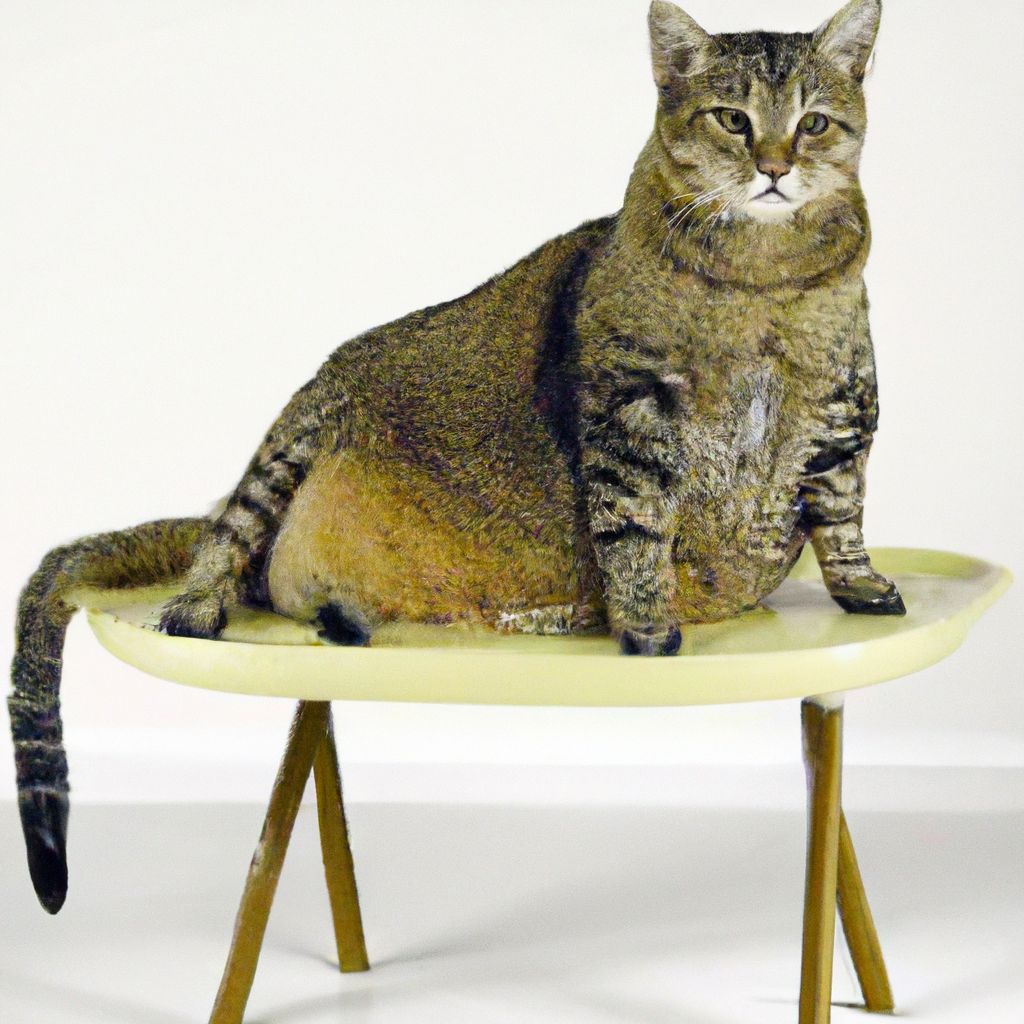Are you curious about the size of tabby cats? Well, wonder no more! In this article, we will explore the various factors that determine the size of tabby cats and shed some light on just how big these adorable felines can grow. Whether you are a cat lover or simply interested in learning about our furry friends, this article is sure to pique your interest and leave you with a newfound understanding of the incredible variety found within the tabby cat breed. So let’s begin our exploration into the world of tabby cats and discover the answer to the question – how big do tabby cats get?
Average Size of Tabby Cats
Tabby cats come in a variety of sizes, but on average, they fall into a certain range when it comes to weight, height, length, and body structure.
Weight
The average weight of a tabby cat is typically between 8 to 10 pounds for females and 10 to 12 pounds for males. However, this can vary depending on factors such as breed, genetics, gender, and nutrition.
Height
Tabby cats typically have an average height ranging from 9 to 10 inches at the shoulder. Again, this can vary depending on individual factors and genetics.
Length
In terms of length, tabby cats usually measure around 18 to 20 inches from their nose to the base of their tail. This length includes both their body and tail combined.
Body Structure
Tabby cats have a well-proportioned body structure with a medium to long torso, muscular limbs, and a strong build. Their bodies are generally agile and graceful, allowing them to move with ease.
Factors Affecting Size
Several factors can influence the size of a tabby cat.
Breed
Different tabby cat breeds have varying average sizes. Some breeds, such as Maine Coons, tend to be larger and heavier, while others, like the Bengal, may have a more muscular and athletic build.
Genetics
Genetics play a significant role in determining a cat’s size. The genes passed down from their parents can influence their growth pattern and potential size.
Gender
Male tabby cats are typically larger and heavier than their female counterparts. This is a common characteristic in many cat breeds, where males tend to have a stockier and more robust build.
Nutrition
Proper nutrition is crucial for a tabby cat to reach their potential size. A well-balanced diet with appropriate portions and high-quality ingredients can support healthy growth and development. On the other hand, inadequate nutrition can result in stunted growth or obesity, both of which can impact a cat’s overall size.

Size Comparison with Other Cat Breeds
While tabby cats have their own unique characteristics, it’s interesting to compare their size with other cat breeds. Here are some popular cat breeds and how they measure up to tabbies.
Persian Cats
Persian cats are known for their luxurious, long fur and round faces. In terms of size, Persians are generally larger than tabbies, with adult males weighing between 11 to 15 pounds and females weighing around 7 to 11 pounds. They also have a slightly shorter stature, measuring around 8 to 10 inches in height.
Maine Coon Cats
Maine Coon cats are famous for their large size and majestic appearance. In comparison to tabbies, Maine Coons are significantly bigger. Males can weigh anywhere from 13 to 18 pounds, while females range from 8 to 12 pounds. These gentle giants also have a greater height, measuring between 10 to 16 inches.
Siamese Cats
Siamese cats have a more slender and elegant build compared to tabbies. They are generally lighter in weight, with males averaging around 8 to 12 pounds and females ranging from 6 to 8 pounds. In terms of height, Siamese cats are typically around 8 to 10 inches tall.
Bengal Cats
Bengal cats are known for their strikingly beautiful coat patterns, resembling that of their wild ancestors. They are generally comparable in size to tabbies, with males weighing between 9 to 12 pounds and females weighing around 6 to 10 pounds. Bengal cats also have a similar height range of 9 to 10 inches.
Average Growth Rate
Tabby cats go through different stages of growth, just like any other breed. Understanding their growth rate can give you a better idea of how they progress from kittens to adults.
Kitten Stage
During the kitten stage, tabby cats experience rapid growth. They quickly go from tiny, fragile balls of fur to curious and energetic explorers. In the first few months, tabby kittens can double or even triple their weight. By around 6 to 12 months, most tabby kittens have reached their adult size, although they may still continue to develop and fill out.
Adolescent Stage
The adolescent stage is a time of fine-tuning for tabby cats. They may still experience some growth, but at a much slower rate compared to when they were kittens. This stage typically lasts from around 1 year to 2 years of age.
Adult Stage
Once tabby cats reach the adult stage, their growth has generally stabilized, and they have reached their final size. This stage usually begins around 2 to 3 years of age, depending on the individual cat. From this point onward, their size is unlikely to change significantly unless influenced by factors such as weight gain or loss.

Recognizing a Large Tabby Cat
If you encounter a tabby cat and are wondering whether it falls into the larger size range, there are a few signs to look out for.
Physical Features
Large tabby cats often have a robust and muscular build. Their limbs may appear sturdy and well-developed, displaying a sense of strength and agility. Their overall body proportions are also well-balanced, with a notable presence.
Weight Range
When it comes to weight, large tabby cats typically exceed the average weight range for their breed and gender. For example, a large male tabby cat may weigh over 12 pounds, while a large female tabby cat may weigh more than 10 pounds.
Height Range
In terms of height, large tabby cats may stand taller than the average range, measuring over 10 inches at the shoulder. Their elongated body structure contributes to their taller appearance.
Length Range
Large tabby cats tend to have an extended length, measuring more than 20 inches from nose to tail. Their tails, in particular, may appear long and well-proportioned to their bodies.
Recognizing a Small Tabby Cat
On the other hand, if you come across a tabby cat that seems smaller and more petite, there are certain characteristics that can help you identify them as such.
Physical Features
Small tabby cats may have a more delicate and slender build compared to their larger counterparts. Their limbs may appear lighter and more refined, giving them a graceful and dainty appearance.
Weight Range
Small tabby cats often fall below the average weight range for their breed and gender. For instance, a small male tabby cat may weigh less than 10 pounds, while a small female tabby cat may weigh under 8 pounds.
Height Range
In terms of height, small tabby cats typically measure less than 9 inches at the shoulder. Their compact body structure contributes to their shorter stature.
Length Range
Small tabby cats tend to have a more compact overall length, measuring less than 18 inches from nose to tail. Their tails may also appear relatively shorter compared to larger tabbies.
Health Considerations for Large Tabby Cats
When dealing with large tabby cats, there are a few health considerations to keep in mind to ensure their well-being.
Obesity
Large tabby cats may be more susceptible to obesity, especially if they are overfed or have a sedentary lifestyle. It’s essential to monitor their food intake and provide them with a balanced diet to prevent excessive weight gain, which can lead to various health issues.
Joint Problems
Due to their larger size, large tabby cats may be prone to joint problems, such as arthritis or hip dysplasia. It’s crucial to provide them with sufficient exercise and ensure they have a comfortable and supportive environment to minimize the risk of such issues.
Heart Conditions
Some larger cat breeds, including tabbies, may be more prone to heart conditions such as hypertrophic cardiomyopathy (HCM). Regular veterinary check-ups and monitoring can help detect and manage any potential heart-related issues.
Health Considerations for Small Tabby Cats
While small tabby cats may not face the same health concerns as their larger counterparts, there are still some considerations to be aware of for their well-being.
Underweight Issues
Small tabby cats may be more susceptible to being underweight, which can lead to a range of health complications. It’s essential to ensure they receive adequate nutrition and consult with a veterinarian if there are concerns about their weight or overall health.
Developmental Concerns
As with any cat, small tabbies require proper nutrition and care during their growth stages to support healthy development. Ensuring they receive the necessary nutrients and veterinary guidance is essential to prevent any developmental concerns that could impact their overall well-being.
Common Myths about Tabby Cat Sizes
There are several misconceptions surrounding the size of tabby cats that need to be addressed.
All Tabby Cats are the Same Size
One common myth is that all tabby cats are the same size. However, as we have discussed, tabby cats can vary in size depending on various factors such as breed, genetics, gender, and nutrition. It’s essential to understand that there is no one-size-fits-all when it comes to tabby cats.
Bigger is Always Better
Another misconception is the belief that a larger tabby cat is always better in terms of appearance or quality. While some people may prefer larger cats, it’s important to remember that size alone does not determine the value or beauty of a cat. Each tabby cat, regardless of size, has unique qualities and characteristics that make them special.
Smaller is Always Cuter
Conversely, some may assume that smaller tabby cats are always cuter or more desirable. Again, cuteness is subjective, and the size of a tabby cat does not solely determine its level of adorableness. Small tabbies can be just as lovable and charming as their larger counterparts.
Tips for Managing the Size of Tabby Cats
Whether you have a large or small tabby cat, there are several practical tips to help you manage their size and ensure their overall well-being.
Appropriate Diet
Provide your tabby cat with a balanced and appropriate diet based on their individual needs. Consult with a veterinarian to determine the right portion sizes and type of food that will support their health and maintain an ideal weight.
Regular Exercise
Encourage your tabby cat to engage in regular exercise to keep them active and fit. Playtime, interactive toys, and designated climbing areas can help them burn calories and maintain muscle tone.
Veterinary Care
Regular veterinary check-ups are crucial for monitoring your tabby cat’s weight, growth, and overall health. Your veterinarian can provide guidance on appropriate nutrition, detect any potential health issues early on, and offer advice on managing their size effectively. With proper care and attention, you can ensure your tabby cat thrives and enjoys a healthy life, regardless of their size.
In conclusion, tabby cats come in various sizes, influenced by factors such as breed, genetics, gender, and nutrition. While they have a general range for weight, height, length, and body structure, individual variations are common. Understanding and recognizing the size of tabby cats can help you provide appropriate care and address any health concerns that may arise. Remember, the size of a tabby cat does not define their worth or beauty, as each cat, regardless of size, has its own unique qualities that make it special. By following proper nutrition, exercise, and regular veterinary care, you can ensure your tabby cat lives a happy and healthy life, regardless of its size.

